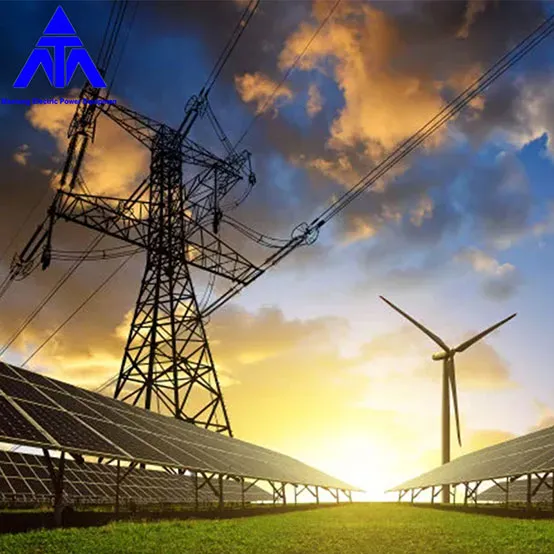Sustainable Construction with Steel Pipe Towers: Innovations and Future Trends
2024-08-02
Introduction
As the world shifts towards sustainable construction and green technologies, steel pipe towers are emerging as a key component in building eco-friendly and resilient infrastructure. This blog explores the innovations in steel pipe tower design and construction, their role in sustainable development, and the future trends shaping this essential industry.
Innovations in Steel Pipe Tower Design and Construction
The steel pipe tower industry is constantly evolving, with innovations aimed at enhancing performance, reducing environmental impact, and improving efficiency. Some of the notable advancements include:

1. High-Strength Alloys:
- The development of high-strength steel alloys has enabled the construction of lighter yet stronger towers. These materials reduce the amount of steel required, cutting down on costs and environmental footprint.
2. Modular Construction:
- Modular steel pipe towers consist of prefabricated sections that can be quickly assembled on-site. This method reduces construction time, minimizes waste, and allows for easier transportation and installation, especially in remote locations.
3. Corrosion-Resistant Coatings:
- Advanced coatings and galvanization techniques protect steel pipe towers from corrosion, extending their lifespan and reducing maintenance needs. These coatings are particularly beneficial in harsh environments such as coastal areas and industrial zones.
4. Energy-Efficient Manufacturing:
- Innovations in steel production, such as electric arc furnaces and recycling technologies, have made the manufacturing process more energy-efficient and environmentally friendly. These methods lower greenhouse gas emissions and promote sustainable steel production.
The Role of Steel Pipe Towers in Sustainable Development
Steel pipe towers contribute to sustainable development in several ways:
1. Renewable Energy Support:
- Steel pipe towers are crucial for supporting wind turbines and other renewable energy infrastructure. By facilitating the generation of clean energy, these towers play a vital role in reducing reliance on fossil fuels and lowering carbon emissions.
2. Efficient Land Use:
- The compact footprint of steel pipe towers allows for efficient land use, making them ideal for urban environments and areas with limited space. Their height enables the transmission of signals and power over long distances without requiring extensive land resources.
3. Longevity and Recyclability:
- The long lifespan of steel pipe towers minimizes the need for frequent replacements, reducing resource consumption and waste. Additionally, steel is highly recyclable, allowing for the recovery and reuse of materials at the end of a tower's life cycle.
4. Green Construction Practices:
- The use of sustainable construction practices, such as modular assembly and energy-efficient manufacturing, aligns with green building principles. These practices reduce the environmental impact of construction projects and promote eco-friendly development.
Future Trends in Steel Pipe Tower Industry
The steel pipe tower industry is poised for further growth and innovation, driven by emerging trends and technological advancements:
1. Smart Towers:
- The integration of smart technologies, such as sensors and IoT devices, is transforming steel pipe towers into intelligent infrastructure. These smart towers can monitor structural health, environmental conditions, and performance in real-time, enabling proactive maintenance and optimizing operations.
2. Hybrid Structures:
- Combining steel with other materials, such as concrete or composite materials, can enhance the performance and sustainability of pipe towers. Hybrid structures offer improved strength, reduced weight, and greater resistance to environmental factors.
3. Decarbonization Initiatives:
- As part of global efforts to combat climate change, the steel industry is focusing on decarbonization initiatives. Innovations such as green hydrogen production and carbon capture technologies are being explored to reduce the carbon footprint of steel manufacturing and make steel pipe towers even more sustainable.
4. Advanced Design Techniques:
- The use of advanced design techniques, including finite element analysis (FEA) and computational fluid dynamics (CFD), allows engineers to optimize the design of steel pipe towers for maximum efficiency and performance. These techniques enable the creation of lighter, stronger, and more resilient structures.
Conclusion
Steel pipe towers are at the forefront of sustainable construction, offering numerous benefits and opportunities for eco-friendly development. Innovations in materials, design, and construction techniques are enhancing their performance and reducing their environmental impact. As the industry continues to evolve, steel pipe towers will play a crucial role in supporting renewable energy, efficient land use, and resilient infrastructure. Embracing these trends and technologies will ensure a sustainable and prosperous future for steel pipe towers and the industries they serve.
---
These blogs provide a detailed overview of the evolution, benefits, and future trends of steel pipe towers, highlighting their significance in modern infrastructure and sustainable development.


